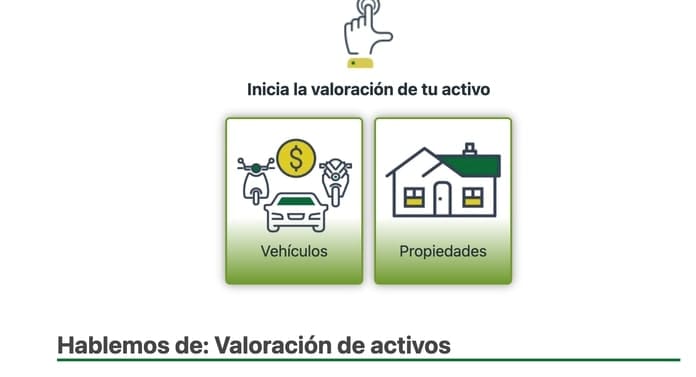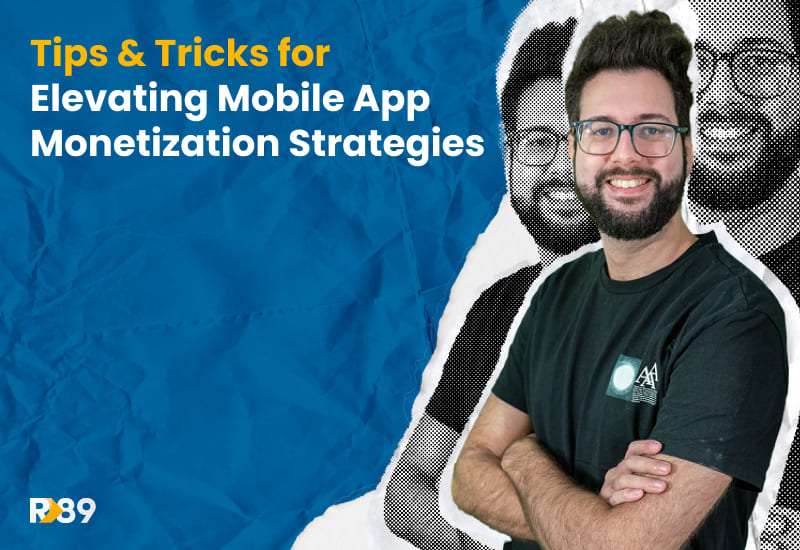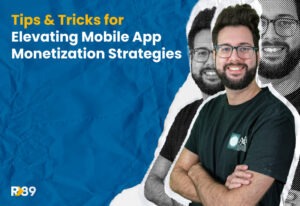A content recommendation engine is a tool that employs algorithms to suggest products or content to users based on their historical interactions, preferences, and various other data points. This tool is widely used across not only content-generating websites, but also online retail sites, streaming services, and social media platforms.
Consumer behavior has changed drastically both content and product-wise. No purchases happen without your customer previously consulting the reviews section. When choosing a movie to watch, an article to read, or headphones to buy, customers rely heavily on the recommendation section or “editor’s pick”. Usually, content recommendations are done through related content widgets, often labeled as “recommended content” or “you might also like”. Another way is to incorporate native ads. This format can be highly targeted based on user behavior, interests, and content relevance, increasing the likelihood of reaching an audience that is genuinely interested in the ad content. Refinery89 offers this highly performing format.
Content recommendation engine works wonders for Amazon, Netflix (or any other streaming platform to that end), Spotify, YouTube, or, eventually, any content platform whatsoever. These days, recommendation engines extend beyond services to physical products and touch bases with any content from tech articles to cooking recipes.
The ubiquity of recommendation engines makes them an indispensable tool, and it’s conceivable that with the development of AI, their predictive power will surpass human expertise. These engines likely know users better than they know themselves.
The precision of a well-developed recommendation engine surpasses even the most trusted advice from friends or experts.
As SEO helps in discovering websites, Recommendation Engine Optimization (REO) enhances product and content recommendations. More and more customers according to GWI reports are willingly sharing personal data to receive tailor-made advice, taking this sharing like sharing information with a doctor for an accurate diagnosis.
Distinguishing SEO from REO.
-
Objective:
-
SEO drives traffic to the website, from search engines.
-
REO enhances engagement and satisfaction by satisfying user needs, within a website.
-
-
User Intent:
-
SEO targets users with specific search queries matching intent with content.
-
REO offers recommendations without explicit queries.
-
-
Data:
-
SEO uses keyword data and search trends.
-
REO relies on machine learning to analyze users’ personal data.
-
-
Interaction:
-
SEO interactions happen when users initiate a search, with success measured by click-through rates.
-
REO interaction starts without the user’s direct query delivering effective engagement.
-
Content recommendation engine
Recommendation engines are designed to predict and suggest items or content that a user may find interesting, delivering these recommendations in a relevant and valuable manner. These suggestions are usually derived from the analysis of a user’s past behaviors, including previous interactions, purchases, and expressed preferences.
Different types of recommendation engines exist, and they generally fall into three categories:
-
Collaborative:
-
User-Based: If users with similar tastes liked a particular item or content, that item or content could be recommended to others in the same preference group.
-
Item-Based: If a user likes a certain item, the system suggests other items, that share similarities with the initial one.
-
-
Content-Based:
This approach bases its suggestions on the characteristics of the items and the user’s stated preferences, this way a film recommendation engine might suggest movies based on genres or actors the user has shown interest in. The same could happen with articles of a similar category.
-
Hybrid Approaches:
These systems blend different methods, often mixing collaborative and content-based filtering, to improve the accuracy and variety of recommendations.
Recommendation systems use different kinds of algorithms to suggest content:
Trend-Based Suggestions:
These algorithms focus on what’s currently popular or trending. For example, if a video or article is getting a lot of attention, it will be recommended to more users. This approach helps popular content become even more widespread, reaching a larger audience on the website or app.
Related Content Recommendations:
These algorithms look at how different pieces of content are related to each other. If many users are interested in two similar news articles, the system might suggest one article to readers of the other. You often see this on websites with sections like “others also read” or “similar content”.
Personalized Content Based on Past Behavior:
These algorithms analyze what types of content a user has interacted with before. They create a detailed profile of each user’s preferences, including their likes and dislikes, based on the content they’ve consumed. This could be categorized by genre, type (like “politics” or “TV show”), and how much time they spend with different types of content. With this information, the system offers more personalized recommendations, making it easier for users to find content they like. This not only simplifies the search process for users but also increases their engagement and loyalty to the platform.
On-page recommendation
These recommendations are integrated into your website to motivate visitors to engage with more of your content, increasing their time spent on the site. By showcasing content that aligns with the visitor’s current interests, the goal is to enhance user engagement on your site, lowering the chances of them leaving quickly (reducing bounce rates).
The more users interact with your content, the more likely they are to share it on social platforms, growing your content’s and business’s visibility. This strategy is beneficial for sites with a vast range of content, as it helps expose a broader audience to various content offerings. However, for newer websites with less content, the effectiveness of these internal content recommendations might be limited.

Off-page recommendation
This approach involves pointing users to content on other websites, which is especially useful for sites that benefit from referral or affiliate income.
By directing users to valuable external content, your website can enhance the overall browsing experience, potentially increasing user loyalty. For sites that are part of a larger publishing network, these external recommendations can effectively funnel traffic to other sites within the network, benefiting all involved parties by creating a symbiotic online environment.

![]()

Optimizing your Content Recommendation Engine
Optimizing your content for REO can be a tricky task. We pulled together some basic steps publishers might consider if they are aiming to enhance their customer retention and as a result grow their revenue.
Start to impress, end to tear up:
The beginning of your blog post is key to catching the reader’s eye, but the ending is just as critical for keeping their interest and encouraging them to come back. Here, we’ll look at how using content recommendations in the conclusion of your blog post can leave a memorable impression on your readers.
Highlight the Key Takeaway:
At the end of your post, point readers to content that deepens their understanding of your main point. Offer links to further resources or detailed guides that provide more insight into the subject, helping your readers get a full grasp of the material.
Inspire Action:
Get your readers to do something with the information they’ve just read. Suggest actionable steps or practical advice that ties back to your post’s topic, inspiring them to apply what they’ve learned.
Encourage Sharing:
Ask your readers to spread the word about your blog. Make it easy for them to share your post on social media with convenient share buttons or engaging calls to action (CTAs).
Link to Authoritative Sources:
Boost your blog’s trustworthiness by linking to relevant external materials, like news articles or expert publications. This demonstrates your engagement with the broader context of your field.
Engage with a Question:
End your post by inviting readers to participate. Ask a compelling question to encourage comments and discussion, getting readers to share their views and experiences.
Preview What’s Next:
Create anticipation for your future content. Talk about upcoming events, webinars, podcasts, or special content releases, tempting readers to keep following your blog for the latest updates.
Utilizing Keywords in Recommendations:
Recommendation systems can enhance SEO by offering suggestions based on specific keywords. When a user searches for a particular term, the system can analyze their search history and behaviors to recommend related content.
Focusing on Long-Tail Keywords:
These systems can also suggest long-tail keywords, which are typically more specific and less competitive, enhancing a site’s likelihood of ranking higher.
Leveraging User-Generated Content:
User-generated content, such as reviews and comments, is valuable for improving credibility and SEO rankings. Recommendation engines can highlight this content, enhancing the site’s trustworthiness and attracting more organic traffic.
No cookies! No Content Recommendation Engine Optimization?
Now when we are about to step into a new brave cookieless world, where personal data gathering will be a tiresome business, what’s going to happen to REO and these wonderful recommendations we receive every time we buy new headphones online or read an article about crypto?
Recommendations Based on User Behavior.
The latest, and most impactful, method of presenting products or articles to users hinges on their interests. Moving beyond basic approaches like cookie tracking and demographic analysis, behavior-based recommendations use data from on-site activities.
For example, imagine using a video streaming platform. When you go to find a movie, you create data based on several behaviors, including:
-
Movies you watched
-
Titles you select but didn’t watch
-
Series you started watching but stopped
-
Selections you hover over
-
Searches you make
-
Rankings you give films
The recommender then effectively builds a user profile for you based on this data set.
This approach fosters a comprehensive understanding of each user’s unique tastes and preferences and is valid for almost any publisher, recommending alike content, e.g. articles and news based on the choices made.
Final words.
Current recommendation technologies often adopt a generalized approach.
Recognizing that every user is different, just as every website is unique, is key. Using personally identifiable information (PII) to infer preferences is often not as effective. To genuinely capture and engage users’ interests it’s essential to shift towards a model that bases recommendations on user behavior.
It’s like setting up friends on a blind date; matches are made based on shared interests and personality traits, not just demographic data.
Want to keep learning more ways to attract users to your site, and better engage them so that they spend more time on site? Stay tuned for more news updates! Also, you can visit previous articles here.








